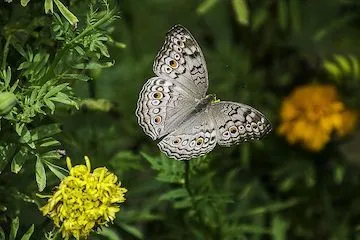The Fifth Stage
Part 7

Introduction
Stages of the Mahayana Bodhisattva Path are similar to the Theravada idea of the Noble Eight-fold Path, although not the same in the order of the stages, as well as the aim of the various stages that comprise the total trajectory that the Bodhisattva has to traverse. The idea of the Bodhisattva path is linked to the idea of bodhicitta, the aspiration of becoming enlightened, and this aim is for the benefit of all sentient beings—when compared to the Arahant idea it is distinguished by the fact, that the Bodhisattva holds off on attaining final non-returning Nirvana until all sentient beings are brought along the journey of the Bodhisattva path towards Enlightenment.

Resources
Various Mahayana texts discuss the stages of the path in varying detail and order. For this seventh article in the series, I’ve mainly followed the stages of the Path as explained in the Dasa Bhumika Sutra. Dasa bhumika in Sanskrit means ten stages. I’ve also consulted the abhidharmsamuccaya text of Asanga and the prajna-paramita abhi-samaya-lankara, that provide additional information for the stages, as well as the Mahayana-sutralamkara text. The Avatamsaka Sutra (Flower Ornament Scripture) has great details on the 10 stages of the path as well, including the Gandavyuha commentary. For cross-reference purposes I’ve used the yogacarabhumi text, which incorporates the bodhisattva stages into an even greater 17 stages, to verify Sanskrit terminology.

In this article, I’ll cover the fifth stage of the 10 Stages of the Mahayana Bodhisattva Path.

5. The stage that is Hard to Surpass (sudurjaya bhumi)
The fifth stage is considered Hard to Surpass, because of the Bodhisattva’s requirement to practice the difficulties and intricacies of deep meditation (dhyana) and mind concentration (samadhi). The development of Buddhist wisdom (prajna) is transformative for the Bodhisattva, as well as realizing the four noble truths (aryasatya) in both the conventional (samvrti) and ultimate sense (paramartha).

After completing the first fourth stages, the Bodhisattva continues the fourth type of purification and perfection. In the first stage, determination was purified, in the second stage discipline and moral virtue was purified, in the third stage concentration was purified, and in the fourth and fifth stage onward the purification and perfection of insight is practiced.

Various types / levels of ignorance have been purified in the first four stages, and in each subsequent stage the ignorance that is to be purified is more subtle and difficult to address than in the previous stage.
- In the first stage, the ignorance of clinging to person and things, and the ignorance of the defilement of wrong tendencies and actions have been purified.
- In the second stage, the ignorance of minute errors and transgressions, and the ignorance of what various actions lead to have been purified.
- In the third stage, the ignorance of greed, and the ignorance of complete mental control to retain what is learned have been purified.
- In the fourth stage, the Bodhisattva will address the ignorance of attachment to attainments in concentration, and the ignorance of attachment to religion.
- In the fifth stage, the Bodhisattva will address the ignorance of one-sided thought rejecting life and death, and the ignorance of one-sided thought heading for nirvana.

In the fifth stage, a Bodhisattva develops and purifies his resolute intentions concerning safe-guarding the Buddhist teachings, mental maturity and disciple, the dissipation of wrong views and destruction of doubt, knowledge of what is the noble path and what is not the noble path, practice of the 37 aids to Enlightenment, and the task of helping other sentient beings in the Buddhist virtues. This stage is called Hard to Surpass, because in this stage the Bodhisattva takes on the difficult task of the vanquishing of suffering, as well as the ripening of other sentient beings while protecting his own mind.
The Bodhisattva acquires strong understanding of the following ten realizations:
Practitioners enter this stage by impartial attention to purity of the teachings of past, present, and future buddhas; to purity of conduct, to purity of mind; to purity of removal of opinion, doubt, uncertainty, and perplexity; to purity of knowledge of what to apply and what to relinquish; to purity of the final discernment and realization of all the elements of enlightenment; and to purity of perfecting all people. They attain unwavering attention and become familiar with both conventional and ultimate truths. As they meditate on all truths, practitioners also develop skills in practical arts and sciences, according to the needs of the people of the time.

Furthermore, in the fifth stage, the Bodhisattva should avoid ten dharmas. They are:

In the next article, I’ll be discussing The Sixth Stage of the Mahayana Bodhisattva Path in full detail.

I will flag comment spam at 1% strength. If you keep on spamming my post, I will flag you at 100%. I don't care if you have limited English abilities, write a couple of sentences about this article, no copy-paste, please. I will flag: one sentence comments, links to your blog and begging for up-votes and follows. Also, I will flag comments that have nothing to do with my blog's article. I will also check your comment section to see if you have been comment spamming on other blogs.


 A link to My Blog
A link to My Blog